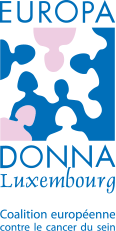Project 20 interviews
«Professionals speak about their daily work and their missions»
Interview with Dr Frédérick Bérangère, radiotherapist and referral oncologist at the Centre François Baclesse (CFB).
Dr Frederick is a radiotherapist and referral oncologist at the Centre François Baclesse (CFB).
Every year, 420 new patients suffering from breast cancer are treated at the CFB. About 600 multi-disciplinary annual meetings take place before any treatment can start. This allows the right decisions to be made on what type of treatment patients should be given. Specialists such as the surgeons, plastic surgeons, oncologists, radiotherapists, radiologists, psychologists, breast care nurses are all involved in these meetings.
After a neoadjuvant (before surgery) or an adjuvant chemotherapy (after surgery), after surgery (breast conserving or not), the oncologist-radiotherapist sees the patient in a consultation.
Before any treatment starts, some preparation needs to take place, such as the simulation scan at CFB. To do the scan, the patient will be set up on a « table » in a specific position, which will then be maintained for future daily sessions. It is very important that the patient feels comfortable during the upcoming sessions.
Once the ideal position is reached, the doctor puts metallic marks around the breast and/or scars. Then the radiotherapy medical technical assistants (ATM-RX) begin the scan. In order to define the zones to be treated, marks are drawn onto the skin.
Once all this preparation has been done, the treatment sessions can start: the fractionation schedule could be spread over five weeks at the standard dose of 2 Gy per session (5 days a week for 5 weeks), or every three weeks (hypofractionation) with a higher dose than 2 Gy per session (5 days a week for 3 weeks). The program will depend on the patient’s age, and if axillary nodes are affected or not.
Radiotherapy is preventive treatment given to avoid a recurrence of the cancer locally in the breast.
Although radiotherapy is painless, there may be side effects, the most common being dermatitis, a red or dry skin irritation.
Since 2014, at CFB, they have been using techniques that modulate the intensity of radiation, and this reduces the risk of dermatitis by a third.
Creams containing urea help to hydrate the skin, and have to be applied after radiotherapy twice a day. A treatment based on essential oils (lavender and niaouli) is also suggested, and helps the well-being of the patient. Additional supportive care suggested is: sessions with an oncology-aesthetician, laser treatment, sessions with a psychologist, and hypnosis.
The radiotherapist and the case manager (the intermediate nurse between patient and doctor) stay in contact with the patient before, during and after treatment. The monitoring during treatment consists of a weekly consultation, and the monitoring after treatment consists of a yearly consultation at CFB for 5 years.
After a mastectomy, once radiotherapy is finished, a reconstruction is possible six months later, if patients want to have it done.
If immediate reconstruction has been done, following a mastectomy, and if radiotherapy has to be done, one of the principal side effects could be formation of hard scar tissue around the breast implant, described in 20% of the cases. (This is a reaction of the sub-cutaneous tissue) Aggravating factors could include tobacco, previous chemotherapy, and radiotherapy.
However, thanks to better techniques in surgery and radiotherapy, since 2017 this complication has been significantly reduced.
Dr Frederick explains that, at the moment, radiation of the entire breast is done at CFB, but there is a project of partial radiation of the breast which still needs to be validated by a scientific commitee, and by the ethical commitee in Luxembourg. This project will involve radiating only the bed of the tumour for six sessions, using a Cyberknife, and could be applied to 30% of patients, if they have the appropriate criteria.
In addition, Dr Frederick is impatient to receive a brand-new machine, which will allow radiation by blocking inhalation: in doing this, the heart and its arteries are kept away from the wall and the breast, so that radiation won’t damage these organs.
Personal message from Dr Frederick:
Our first mission is to take care of the patients in radiotherapy, and to offer them the best care possible.
Thanks to multi-disciplinary meetings and clinical research, to the development of radiation techniques at CFB, the new machines we will acquire in the next few months, and special thanks to the daily team (doctors, radiotherapists, ATM-RX, nurses…) we are able to offer our patients the best care possible, personally adapted to each of them in accordance with international recommendations.

The radiotherapy -team at CFB works daily to improve the care given to patients.
Dr Bérangère Frederick is the 4th person on the left, top row.
Thank you so much Dr Frederick for your time, your personal dedication and of your team, and for all the information.
The interview was conducted by Ms. Françoise Hetto-Gaasch, member of the committee of Europa Donna Luxembourg in June 2022.
Europa Donna Luxembourg Asbl
1b rue Thomas Edison L-1445 Strassen
Tél. : 621 47 83 94
E-mail : europadonna@pt.lu
